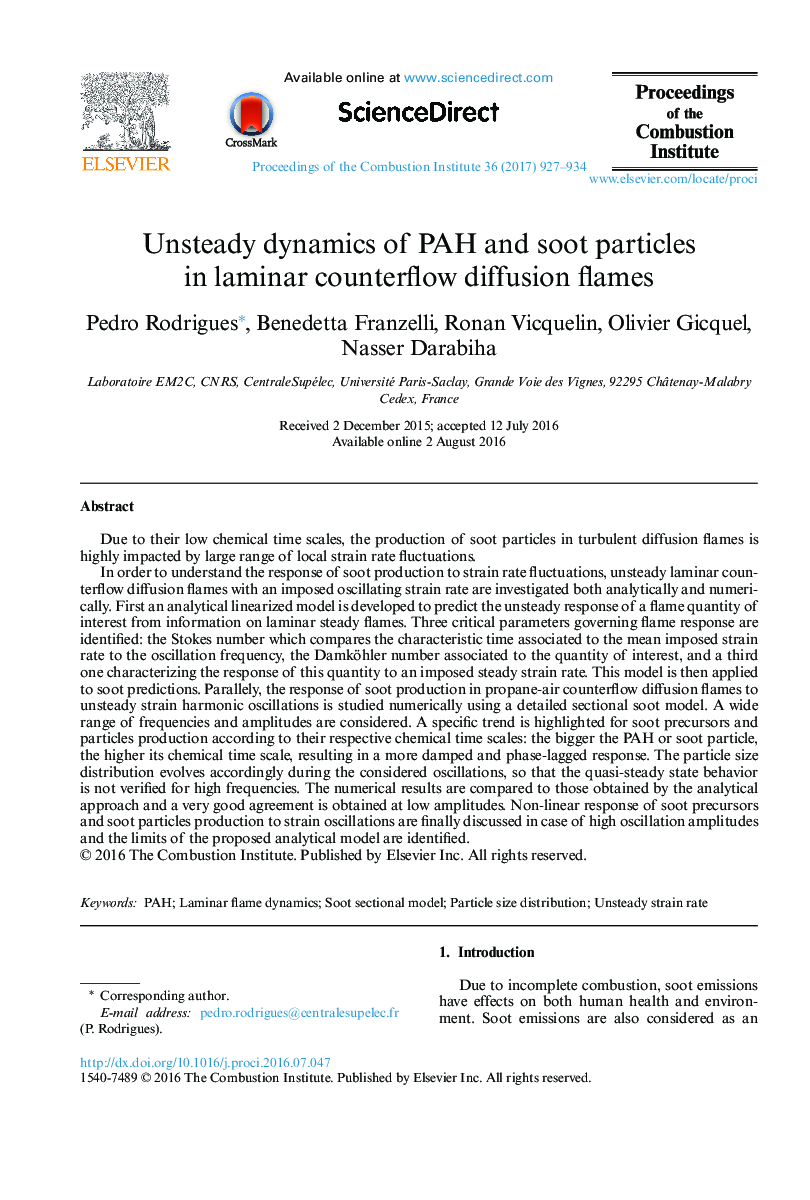| Article ID | Journal | Published Year | Pages | File Type |
|---|---|---|---|---|
| 6478230 | Proceedings of the Combustion Institute | 2017 | 8 Pages |
Due to their low chemical time scales, the production of soot particles in turbulent diffusion flames is highly impacted by large range of local strain rate fluctuations.In order to understand the response of soot production to strain rate fluctuations, unsteady laminar counterflow diffusion flames with an imposed oscillating strain rate are investigated both analytically and numerically. First an analytical linearized model is developed to predict the unsteady response of a flame quantity of interest from information on laminar steady flames. Three critical parameters governing flame response are identified: the Stokes number which compares the characteristic time associated to the mean imposed strain rate to the oscillation frequency, the Damköhler number associated to the quantity of interest, and a third one characterizing the response of this quantity to an imposed steady strain rate. This model is then applied to soot predictions. Parallely, the response of soot production in propane-air counterflow diffusion flames to unsteady strain harmonic oscillations is studied numerically using a detailed sectional soot model. A wide range of frequencies and amplitudes are considered. A specific trend is highlighted for soot precursors and particles production according to their respective chemical time scales: the bigger the PAH or soot particle, the higher its chemical time scale, resulting in a more damped and phase-lagged response. The particle size distribution evolves accordingly during the considered oscillations, so that the quasi-steady state behavior is not verified for high frequencies. The numerical results are compared to those obtained by the analytical approach and a very good agreement is obtained at low amplitudes. Non-linear response of soot precursors and soot particles production to strain oscillations are finally discussed in case of high oscillation amplitudes and the limits of the proposed analytical model are identified.
